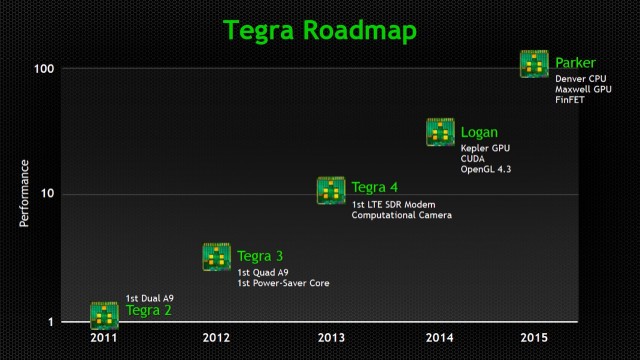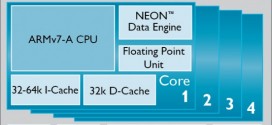Both TSMC and Global Foundries are expected to make 20nm ARM chips next year, which will help the chips to achieve 3 Ghz clock speed at the same power consumption, or cut power consumption by 25% if they keep the performance the same.
It’s usually hard to deduce from a press release that these 2 benefits are an either/or proposition, because all chip companies seem to make it sound as if these benefits can be achieved at the same time. But unless they’ve already established what the compromise should be between power consumption and performance, then they are really talking about the “maximum” numbers that can be achieved either way, at 20nm.
So for example, you can either keep the Qualcomm S800 at 2.3 Ghz on 20nm, and make it 25% more efficient, or you raise the clock speed to 3 Ghz and keep the power consumption the same as it was at 2.3 Ghz at 28nm. There’s also a 3rd option. You can keep the performance and power consumption the same, but make the chip much smaller (1.9x smaller according to TSMC), which means the chip costs less.
Almost no one chooses this last option. In the mobile space, the race is usually for performance, because battery efficiency is already pretty good with ARM chips. However, I’ve noticed that pretty much all mobile chip makers have started compromising just slightly on power consumption with each new generation, making them more power hungry, as they try to win the performance race. That trend needs to stop, because before we know it we’ll all be using 4,000 mAh batteries in our phones, and the battery life won’t be much better than when it was with our 2,000 mAh battery phones.
In the desktop space Intel has chosen the first option, and has started regressing on overall performance of the CPU with Haswell. As an example, the mainstream dual core 1.3 Ghz Haswell CPU in Macbook Air has about the same performance as a dual core 1.5 Ghz IVB CPU, but the problem is, the “mainstream” IVB chip last year was clocked at 1.8 Ghz. So Intel is starting to regress on overall CPU performance, to gain some extra battery life, and make the Haswell architecture seem more impressive than it really is on battery life.
Speaking of Intel chips, a lot of people think Intel will have an advantage in the mobile space thanks to their process technology which is ahead of everyone else. The last part is true, the first part isn’t. Yes, Intel is making 22nm chips, while everyone else is making 28nm chips. But their Atom chips are on a schedule that is way behind the desktop/notebook chips in terms of process technology.
So we’ll only see 22nm Intel Merrifield (Silvermont) chips next spring. That’s about the same time when we should be expecting these 20nm ARM chips. Intel wants to put Atom on a faster track, and make it at 14nm about a year later, but Global Foundries and TSMC are also preparing to make ARM chips at 14/16nm for 2015. Nvidia has even announced that its own Denver/Maxwell Tegra 6 for 2015 will be made at 16nm FinFET.
What we can learn from this is that ARM chips are going to continue being very competitive in the mobile space, and I don’t really see a window for Intel to get into the market anytime soon. These ARM chips should also make increasingly more possible the idea of Android notebooks, as long as Google also does its part and makes Android very optimized for such devices.
 TechDomino
TechDomino




